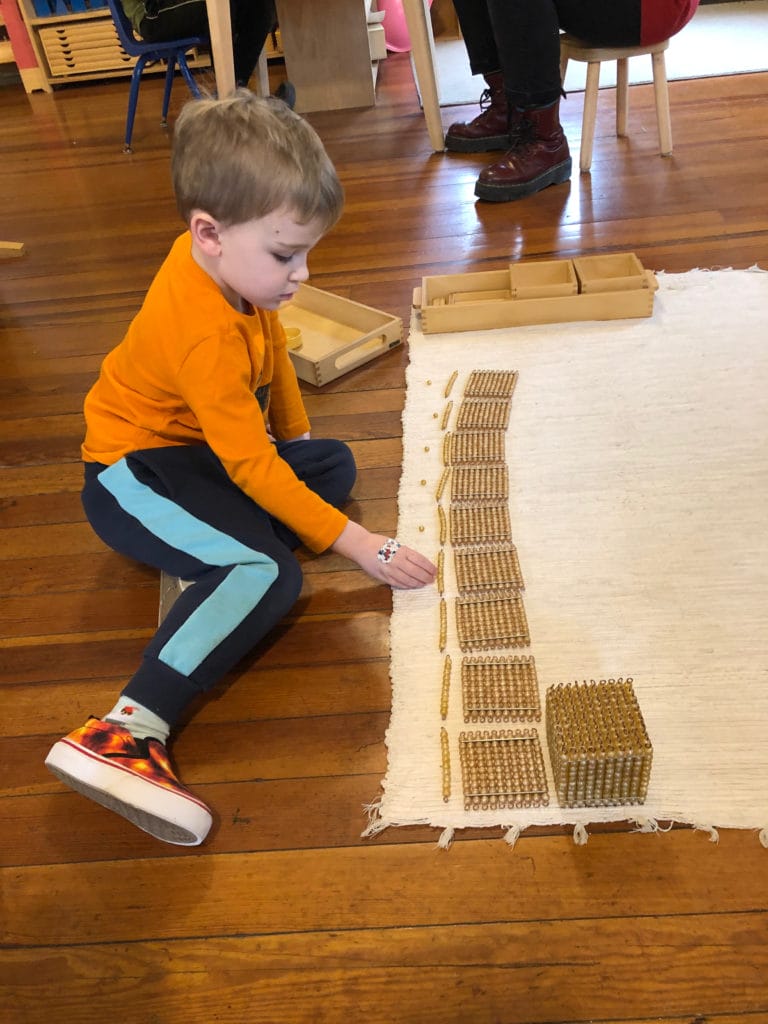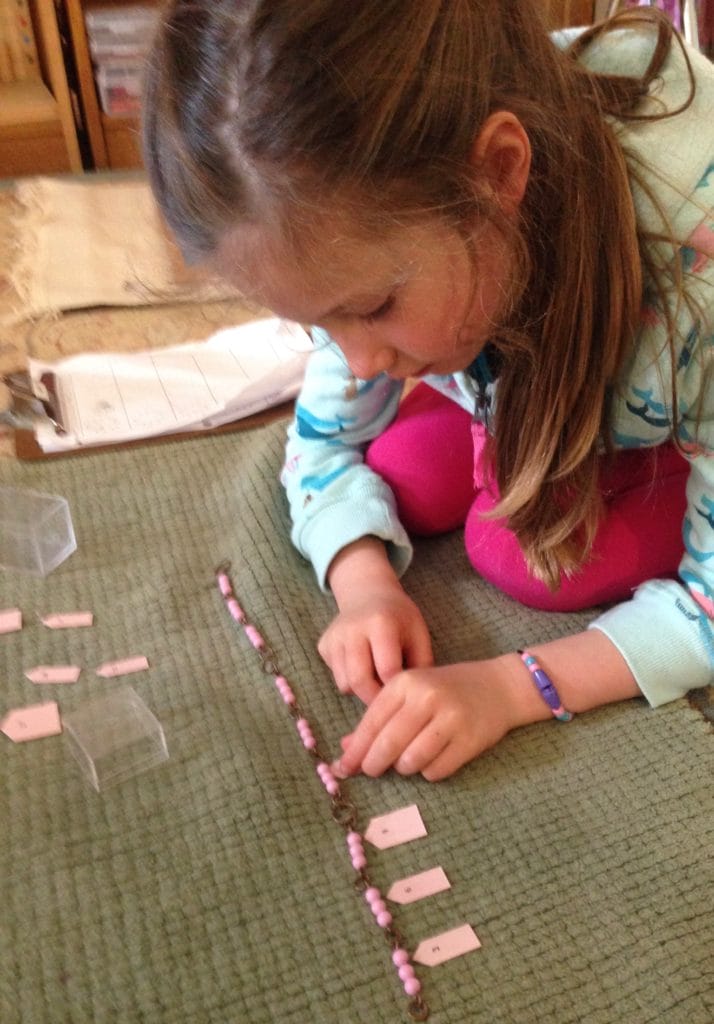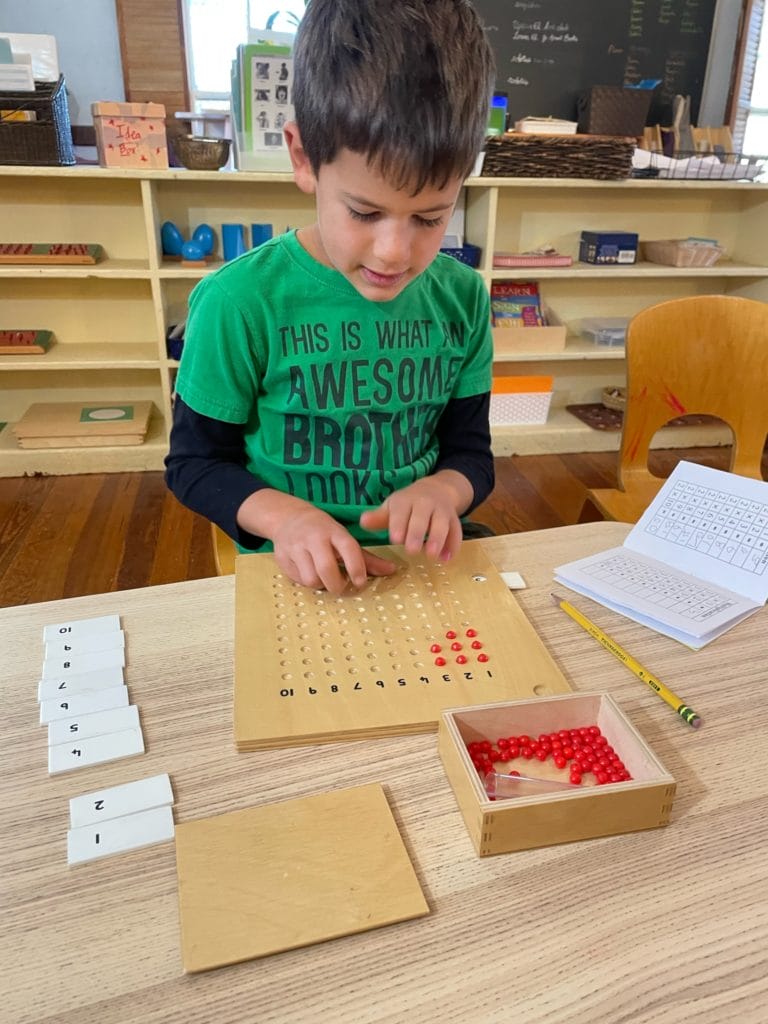An introduction to mathematics at the Toddler level is given through simple counting exercises such as counting the plates when setting the table, counting the children as they line up, and through counting songs and rhymes.
At the Primary level, children’s mathematical sense is built on the strong foundation of the sensorial materials where many fundamental concepts, such as length, volume, gradation, sequencing, grouping and so on, have been already experienced via the senses. These activities make the abstract concepts of mathematics concrete for hands-on learning. Each activity isolates a particular concept and integrates with other activities to form a strong foundation for further exploration.
Beginning Primary math activities include 1 to 10 (sequences, quantity, numeral names, combinations of ten, basic arithmetic), teens, tens, introduction to the decimal system, and the operations of addition, multiplication, subtraction, and division.
Children explore fractional equivalences and the fractional names with manipulative materials. They use a wide variety of two and three-dimensional geometry materials and learn the basics of geometric nomenclature. They see and explore binomial and trinomial patterns in certain materials and gain a visual and tactile impression for later work when they will use such patterns to explore the concepts of squaring, square root, cubing, and cube root during the elementary years. The emphasis is always on examining patterns and sequences and the connections between arithmetic and geometry in order to help children develop their mathematical minds from an early age.
At the primary level, the focus in on the procedure and concept of the operations, not on accuracy. That is, until the child is determined to find the correct answer.




